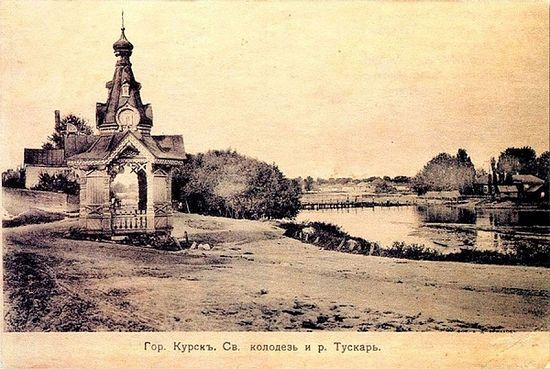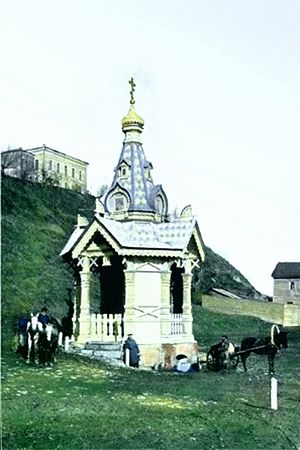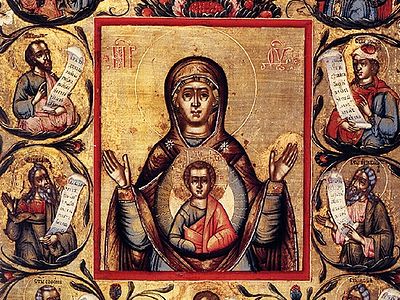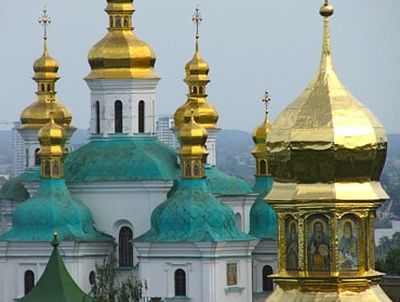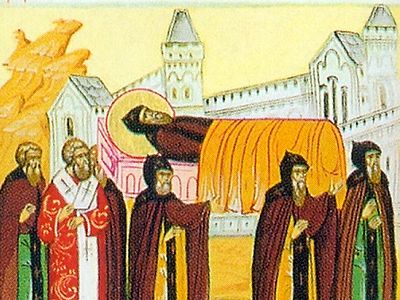Moscow, May 16, 2017
Archaeologists discovered a well a year-and-a-half ago on Nizhny Naberezhnaya Street in Kursk, Russia that is believed to be connected with the life of St. Theodosius of the Kiev Caves, reports dddkursk.ru. According to tradition, St. Theodosius, the father of cenobitic monasticism in Russia and one of the founders of the Kiev Caves Lavra, used to draw water from this well for baking prosphora.
“Theodosius of the Cave’s well is a spring framed by a brick base,” explains an employee of the Kursk Archaeological Museum. “A wooden chapel used to stand over it. It is an unusually deep well; water is drawn from it with a bucket,” he added.
Historians believe the find is unique and that the place could become a landmark on the map of the Kursk region, if opened to the public. Local residents, as well as local and federal authorities are tracking developments surrounding the discovery. “With its rich Orthodox history, Kursk will become a unique tourist center, and the restoration of the well, with its thousand-year history, will be a new milestone in the development of pilgrim-tourism,” said State Duma deputy Alexander Bryksin.
St. Theodosius laid the foundations of his spiritual and ascetic life in Kursk, and, in addition to the cities many cathedrals and churches, the finding of the well is proof that “the land of Kursk is a spiritual oasis,” the deputy said.
The age of the city of Kursk is even learned from the life of St. Theodosius. In his life, compiled by Nestor the Chronicler, the first mention of the city of Kursk is found, noting that St. Theodosius’s parents had moved from the city of Vasileva, near Kiev, to Kursk, at the behest of Prince Yaroslav the Wise. The chronicle gives no precise date, but historians have concluded that the family moved no earlier than 1036.
St. Theodosius spent his childhood years in Kursk, where he was strengthened in his faith in God, and decided to become a monk, against the wishes of his rich and domineering mother. When he learned that the Divine Liturgy was not often celebrated because there was no one to bake prosphora, he took the task upon himself. He began to buy and grind grain and to draw water from the well on the banks of the Tuskar River. This is why the well is called holy, or simply “Theodosius’” well.
The approximate location of the well has long been known, near the Zamenskoe Monastery along the Tuskar River. The well was once one of the city’s attractions, and is even depicted in pre-revolutionary postcards. It was eventually determined that the well was located behind a concrete fence on the territory of the Quadra power company, which opened its territory for searches after learning of the archaeologists’ ambitions.
The remains of the well were eventually discovered at a depth of three meters. The researchers discovered burned wood from the chapel that once stood over the well, as well as the brick foundation, and metal nails.
“When it became clear that archaeologists had discovered the place connected with St. Theodosius of the Caves on the territory of [our company], we immediately supported the idea that it should be available to all believers,” said the managing director of the local Quadra branch, Alexander Boronin. The company even dismantled the garage that stood where the well once was, cleaned the trash, and filled the area with gravel and sand.
The company intends to continue beautifying the area, and with the blessing of the Russian Orthodox Church, to erect a chapel similar to the one that stood over the well in the nineteenth century.
“The preservation of the cultural and historical heritage is important for any person. And in Orthodox Tradition, a special reverence for everything connected with the names of saints gives a sense of their invisible presence,” Archpriest Oleg Chebanov said, certain that the restored well will become not only a place of pilgrimage, but a thread connecting the centuries.
